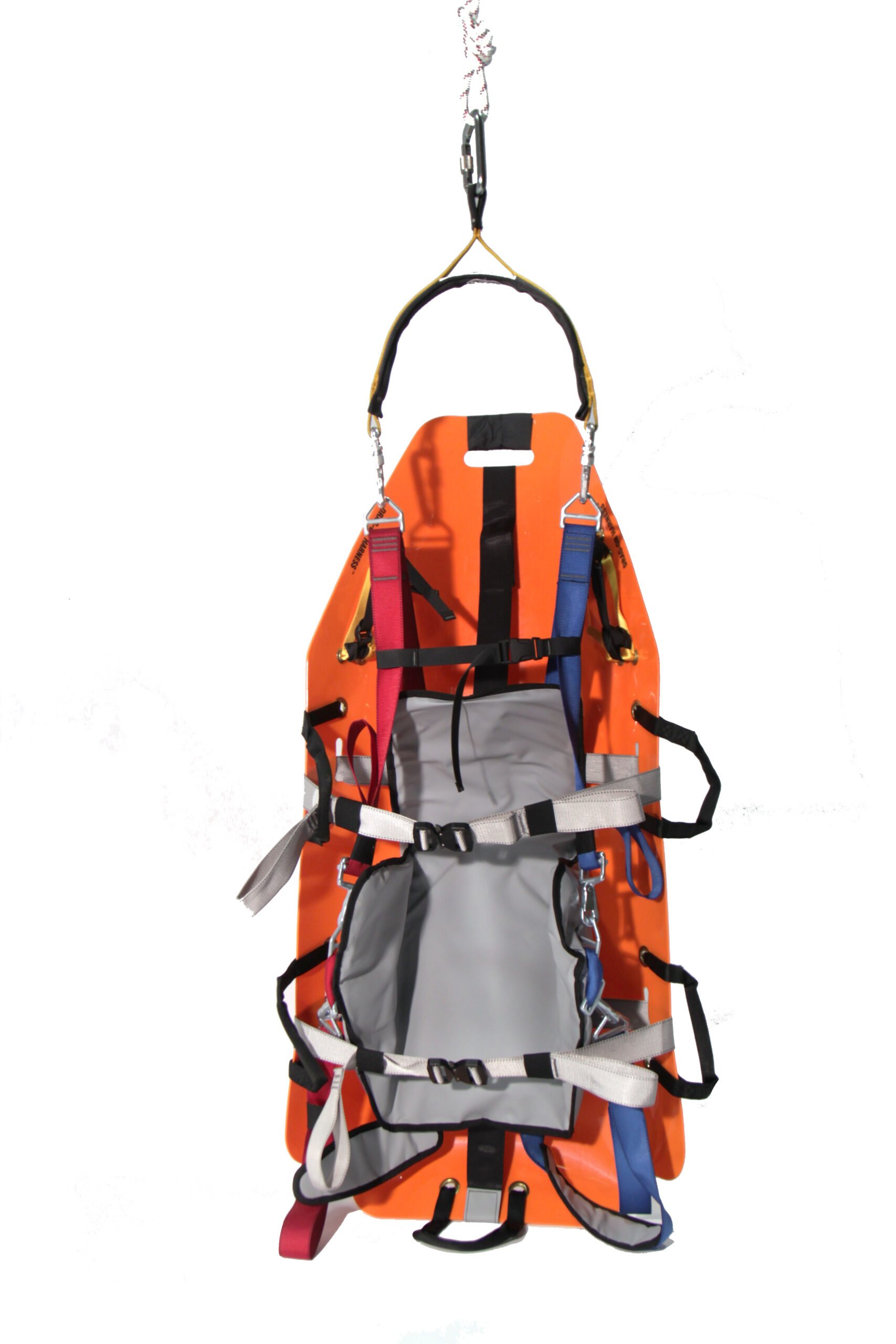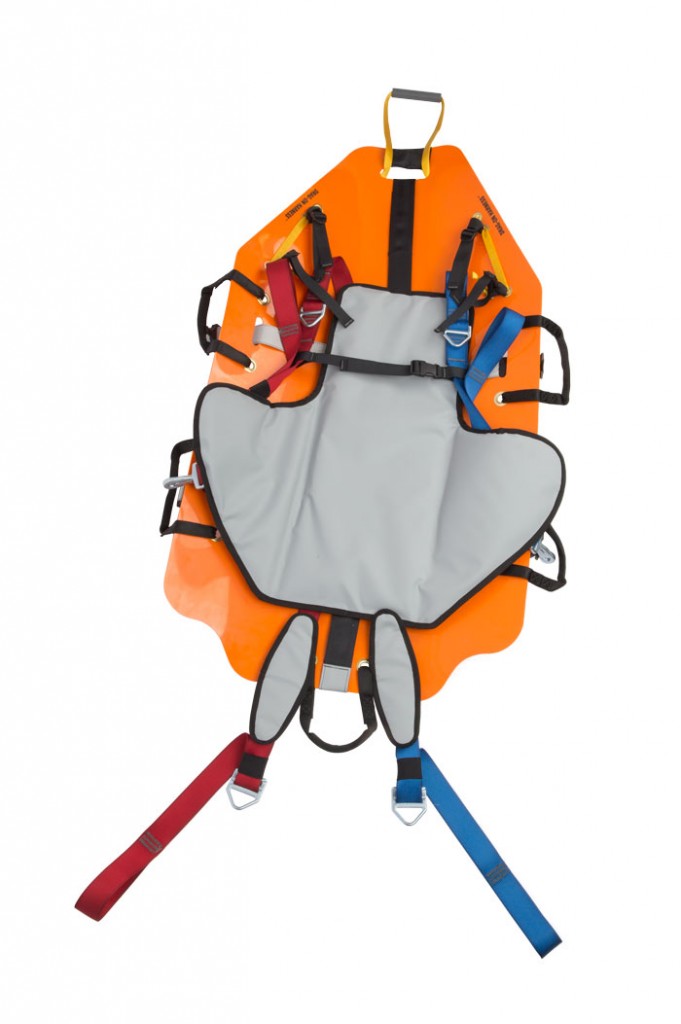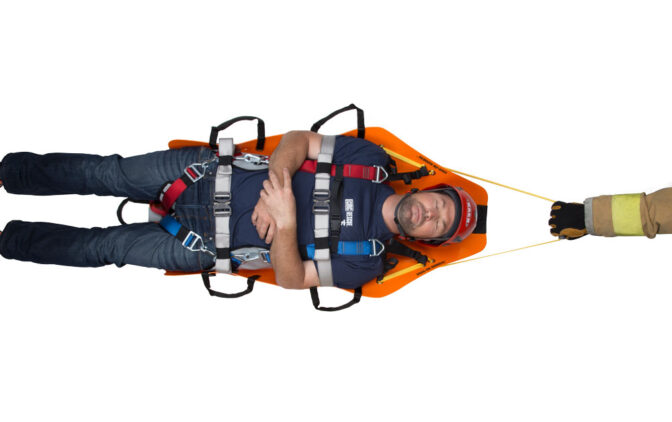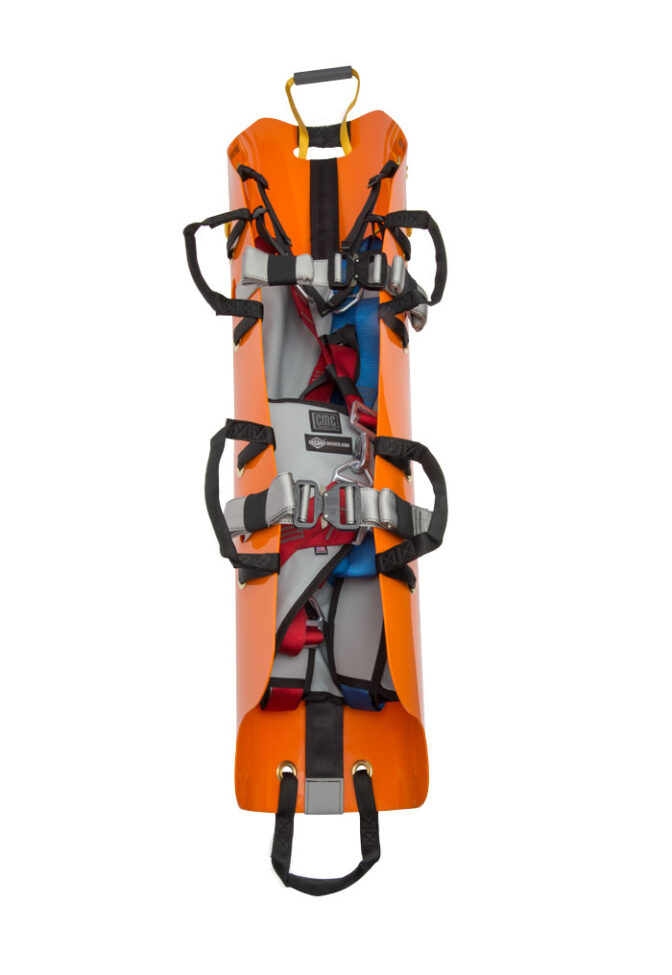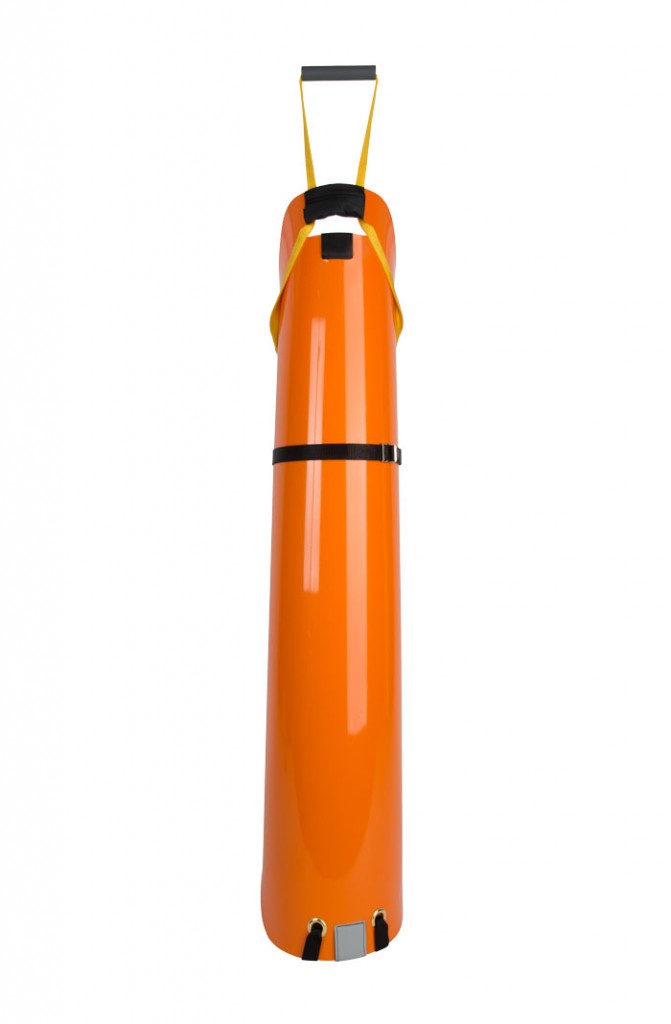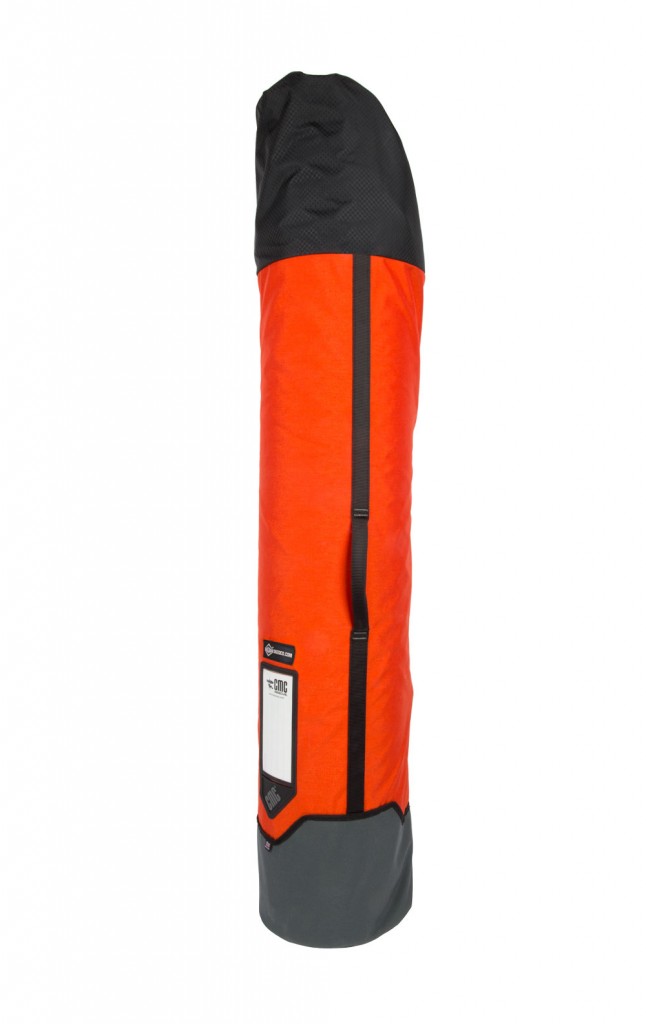Skedco Drag -N-lift Harnas
Description
Because there is a need for a rapid extrication device when spinal immobilization is not an issue, the CMC Rescue/SKEDCO Drag-N-Lift Harness™ was developed and developed as a means to quickly pack and remove a patient from a confined space. to fetch. This device allows the rescuer to provide a quick load-and-go technique that allows the patient to be efficiently and safely packed for a vertical lift, horizontal execution or drag extraction. Compact storage, ease of use, and flexibility in transport have made Sked® stretchers popular worldwide. The drag sheet is made of sturdy E-Z sliding plastic that stiffens when bent around the patient. A variety of handles and straps allow the stretcher to be transported by carrying, lifting (vertically or horizontally) on a rope system, or pulling as the stretcher slides over the smooth bottom. In the event that spinal immobilization is required, the device is compatible with the Oregon Spine Splint System (OSS) and cervical collar.
-Designed for quick and safe vertical lifting and horizontal release with dragging or carrying
-Vertical lifting attachment points designed for use with a lifting bridle/spreader bar
-Compatible with the OSS system and other spinal immobilization devices
-Replaceable Skedco E-Z sliding plastic tow blanket protects patient and harness
-Integrated harness construction securely holds the patient
-Padded back section and leg loops provide patient comfort
-Color-coded straps and quick disconnects speed up patient packing
-Handles on the sides, top and bottom allow for easy patient positioning and movement
-AustriAlpin Cobra® buckles are secure and easy to adjust
-Corrosion-resistant fittings
-X-ray transparent
-Cleans easily
-Includes heavy-duty water-resistant Cordura® nylon storage bag
-UL Listed per NFPA 1983 (2012 ED) Class III Victim Aid
-Made in the USA from domestic and foreign components
Spinal Immobilization Protocol There has been a recent trend in an increasing number of EMS agencies supporting a progressive, evidence-based approach in an effort to reduce unnecessary spinal immobilizations in the field. It is appropriate for providers to immobilize certain trauma patients, but many other trauma patients are unnecessarily immobilized. Spinal immobilization is not always a benign procedure as it can result in increased time on site, delay in delivery to definitive care, problematic airway management, increased patient pain and discomfort, and unnecessary radiographic testing. Many trauma patients can be safely and accurately assessed and treated without spinal immobilization if they meet all criteria in the prehospital spinal assessment guidelines. Extensive training and ongoing evaluation are necessary for an effective selective immobilization protocol. Always consult your specific medical guidelines for spinal immobilization procedures.
Shipping cost is based on weight. Just add products to your cart and use the Shipping Calculator to see the shipping price.
We want you to be 100% satisfied with your purchase. Items can be returned or exchanged within 30 days of delivery.
